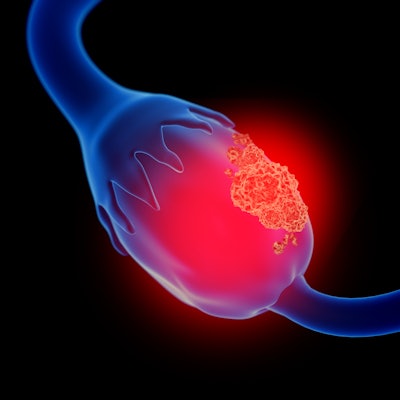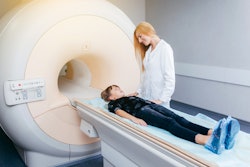
Researchers from France and the U.K. have developed an MRI-based, five-point scoring system that can distinguish between malignant and benign ovarian cysts with an accuracy of 90% when ultrasound exams are inconclusive, according to a study published January 24 in JAMA Network Open.
In fact, the researchers are so convinced of its efficacy that they have proposed their approach, called the Ovarian-Adnexal Reporting and Data System (O-RADS), be used for risk assessment when other avenues of cancer evaluation do not provide a definitive answer.
"Using this score in clinical practice may allow a tailored, patient-centered approach for masses that are sonographically indeterminate, preventing unnecessary surgery, less extensive surgery, or fertility preservation when appropriate, while ensuring preoperative detection of lesions with a high likelihood of malignancy," wrote the authors, led by Dr. Isabelle Thomassin-Naggara, PhD, from Assistance Publique - Hôpitaux de Paris, Sorbonne University in Paris.
Currently, ovarian cancer is detected primarily through ultrasound and blood work. Previous research, however, has shown that ultrasonography does not identify between 18% and 31% of abnormal, or adnexal, masses using conventional guidelines and scoring systems. Biopsy is not always a viable option either, given the "risk of potentially upstaging a confined early-stage ovarian cancer or because of the risk of sampling error, resulting in a missed cancer diagnosis," the authors noted.
Therefore, a "validated scoring system that standardizes imaging reports and categorizes the risk of malignant neoplasm in these women would be useful as a triage test to decide whether surgery is appropriate and, if so, the extent of surgery required," they added.
The researchers completed a review of 1,194 patients (mean age, 49; range, 18-96) who underwent routine 1.5- or 3-tesla MRI pelvic scans (GE Healthcare, Philips Healthcare, and Siemens Healthineers) from March 2013 to March 2016 at 15 centers across Europe. At these facilities, clinicians used MR images to look for particular features in cysts, such changes in tissue structure, that could not be identified on ultrasound. Within the cohort, 1,130 women (95%) were found to have a total of 1,502 pelvic masses.
The O-RADS scoring system is designed to rate the cysts from 1 to 5, based on MR images, with 1 as no adnexal mass and 5 for adnexal lesion with solid tissue or the presence of thickening or nodules. The efficacy of the O-RADS scale was evaluated based on the reference standard of final diagnosis for true- and false-negative rates, as well as diagnostic accuracy, sensitivity, and specificity.
In their evaluation of outcomes, the researchers found that O-RADS achieved an overall sensitivity of 93% and specificity of 91% and also correctly reclassified pelvic masses as normal with a sensitivity of 99% and specificity of 78%. In addition, the strategy helped determine which women needed surgery. Of 580 women with a mass on MRI and no specific gynecological symptoms, 362 women (62%) underwent surgery based on O-RADS results.
The scoring system also appeared easy to comprehend, with good interrater agreement among and between experienced and junior readers. The two groups achieved similar sensitivity and specificity, which ranged from 89% to 96%.



.fFmgij6Hin.png?auto=compress%2Cformat&fit=crop&h=100&q=70&w=100)




.fFmgij6Hin.png?auto=compress%2Cformat&fit=crop&h=167&q=70&w=250)











